Best Full-Size SUV: Testing 4 of the Biggest On Sale Today

Four big, body-on-frame SUVs enter the arena. Only one will win. It’s time to see which is the best full-size SUV.
Car hire services, ranch owners, extraordinarily large families, and those who tow small mountains pay attention—this comparison is for you.
Get the Flash Player to see this player.
We gathered four of the best large, body-on-frame SUVs currently on sale. These big sport utilities excel in hauling people, cargo, and sizable trailers. But more than that, the higher-end models are crammed full of luxury, technology, and comfort.
Managing editor Mike Schlee, freelance writer and photographer Jeff Wilson, and myself spent the week driving all four of this big-boned bruisers. At the end of the week, we were all in agreement about which SUV was best, but there were some surprises elsewhere in the ranks. Read on for the full story.
4th Place – Ford Expedition Platinum Max 4X4
In every comparison, one unlucky competitor must bring up the back of the pack. In this case, that ignominious defeat goes to the Ford Expedition. Even here in tippy-top Platinum trim, and the extended-wheelbase Max form to boot, the Expedition couldn’t quite match its body-on-frame brothers.
Ford’s adventure-sized SUV starts on the back foot as the oldest of this quartet. Familiarity doesn’t breed contempt here, but being such a common sight at the airport arrivals section, the Expedition’s well-known styling doesn’t draw us in like the others.
Room to Stretch Out
What it lacks in eye-catching qualities, the Expedition makes up for in sheer size. The Max adds another foot in length, and nine inches of wheelbase, to the regular Expedition. It’s the longest rig here, but other than a slight increase to third-row headroom, all those added inches go to cargo storage. Pair that with the highest towing capacity of the lot, and it’s clear the Expo is the choice for moving a small village and its things.
Speaking of the third row, way-back riders won’t feel short-changed in the Expedition. A strangely contoured roof section gives it a little less headroom than the GMC and Wagoneer, but legroom is fully adult-friendly. Our biggest complaint centered around the too-low headrests, which suggest Ford would rather you leave the third row to younger folks. There’s tons of space behind the seats—the most in the comparison, in fact, and there’s the ability to open the glass separate from the tailgate.
The Expo’s second-row experience is only meh. There’s an average amount of headroom, and the captain’s chairs aren’t as supportive as those in the Jeep or GMC. Up front, the Expedition’s cabin is logically laid out, and now features the Mach-E’s big portrait-style touchscreen. Once learned, it’s a solid system, and we appreciate that it keeps the most-used features on-screen even with the wireless Apple CarPlay running.
SEE ALSO: 2021 Ford Explorer XLT Review: Bringing the Team TogetherSmooth, Refined Powertrain
We gave the Ford solid marks for its EcoBoost V6 powertrain. While it has the lowest horsepower on paper, in practice the ample torque carries it well. The 10-speed auto avoids the gear-hunting we witnessed in the Mustang GT earlier this year, as well. If you’re pulling big distances in the Expedition, it being the only SUV here to drink regular fuel is a serious advantage.
Ride quality is good too, with the Ford’s continuously controlled damping suspension using a road preview system to prep for the worst bumps ahead. It can’t quite match the air-ride suppleness of the GMC or not-a-Jeep, though.
Verdict: Ford Expedition Platinum Max 4X4
That’s the Expo’s story summarized: can’t quite match. It has strengths, but they’re just not strong enough in this talented group. That it’s second in price to the GMC hurts, too. If sheer acreage and towing capacity are your priorities, then the Expo remains a strong choice.
2nd Place (Tie) – GMC Yukon 4WD Denali Ultimate
General Motors’ full-size SUVs have been the staple of this segment for decades. Ranging in size and price, the Yukon Denali has become a go-to favourite for those wanting a more premium body-on-frame SUV. For the 2023 model year, there’s an even fancier version called the Denali Ultimate.
It takes the Yukon’s already high-end interior to another level. Brown leather covers a variety of surfaces, with cross-stitching on all three rows of seats as well as some of the dash and door trim. The headrests for front seat passengers have built-in dual Bose speakers while second row passengers each get a large flatscreen, with individual HDMI hookups. Power folding third row seats, a digital gauge cluster, panoramic sunroof, and ventilated front seats, are just a few of the other luxurious options added in this SUV.
We scored the vehicle’s interior design as second best in test, with material quality couldn’t be beat. There are buttons everywhere which may seem cluttered and overwhelming to some, but we appreciate the easily accessible hard controls that aren’t buried in multiple infotainment screen menus. There’s a volume knob, a tuning knob, and even controls to quickly adjust the head-up display.
SEE ALSO: Chevrolet Tahoe vs GMC Yukon: Which of These Full-Size GM SUVs is the Better Buy?Surprising Space, Unsuspecting Comfort
Moving to the second row, the Yukon’s seats at first glance appear to be thin and unsupportive. But once sitting on them, the offer an unexpected cushiony, comfortable experience. The vehicle also benefits from arguably the best panoramic sunroof in the test and there is a lot of space for middle-row occupants to move around.
For third-row passengers, things aren’t quite as good. The Yukon Denali does include the fancy cross-stitched seats even back there, but headroom is only okay. Worst still, the chunky C-pillar, black roof-liner, and minuscule rear window combine to make for a rather claustrophobic experience.
In terms of cargo carrying capacity, the Yukon redeems itself. With the rear seats up, it may only offers the third most cargo space, placing just ahead of the Sequoia. But when both the 2nd and 3rd row of seats are folded, its cargo space expands to be best in test, even surpassing the extended-length Ford Expedition Max. And remember, there is always the elongated Yukon Denali XL if more space is still needed.
Big Power, Big Performance, Big Thirst
Powering this Yukon Denali Ultimate is a 6.2-liter V8 engine that makes 420 hp and 460 lb-ft of torque. It’s one of only two V8s in this test, outpowering the Expedition and Wagoneer. Only the Sequoia’s turbocharged hybrid powertrain offers more outright horsepower. Response from the GMC’s V8 is good, although it lacks the initial wave or torque found in turbocharged competitors like the Expedition. Still, we prefer the Yukon’s drivetrain over that found in the Ford.
With a constantly adjusting air suspension like the Wagoneer, the Yukon Denali offers great ride comfort and surprisingly confident handling. The latter scored tops in our test as the Yukon hides its excessive weight better than any of its competitors.
The Verdict: GMC Yukon Denali
Without a doubt, the GMC Yukon Denali Ultimate is the best vehicle in this comparison. But there’s a price to pay. As tested, the Denali comes in at $97,460. That’s roughly $16,000 more than the Sequoia or Wagoneer. There’s also the matter of its lackluster fuel economy. Officially, the Denali is rated 14 mpg city and 18 mpg highway. That’s quite thirsty, even for this class, finishing dead last in our comparison.
It was these two factors that held the GMC Yukon Denali back from claiming the overall victory in our best full-size SUV shootout. If one is willing to pay these premiums though, there isn’t much else we’d change on this large sport utility.
2nd Place (Tie) – Toyota Sequoia Capstone 4X4
When all the points were tallied, the new kid on the block ended up in an exact tie with the GMC Yukon. That’s not to say it’s a similar vehicle; in fact, the Sequoia is quite a bit different from everything here, with more pronounced strengths and weaknesses that make it great—if you fit a particular use case.
Big Outside, Not So Much Inside
First off, we have to mention that this is a pre-production Sequoia Capstone. Toyota didn’t want to miss this comparo, so sent us this. Honestly, unless you know where to look, the only obvious sign is the enormous warning stuck on the dashboard. Capstone is Toyota’s new top truck trim, the Denali or Platinum of its lineup, and it comes loaded up with soft, squishy black and cream leather. As first impressions go, this tuxedo-style color scheme is a strong one.
Unfortunately, things get worse as you move further back in the big redwood. The Sequoia finished last in second-row scoring, as it’s only one here not to allow the seats to slide forwards and backwards. That’s probably because of the large roof drop down right in front of the passengers. At least the second-row seats easily fold up and away for access to the back.
it’s another strike against the Toyota back there, though. The Sequoia’s back bench is a perfect storm of uncomfortableness for anyone out of grade school. The seat cushions are low to the ground, so adult knees are up in their chests. The whole row slides fore and aft six inches, but even at its rear-most setting the Sequoia gives up multiple inches to the others. Headroom is tight, too.
Going by sheer square-footage, the Sequoia has the smallest cargo area. It’s still a decent size simply because this rig is so big, though. The adjustable cargo tray makes the best use of the space too, allowing owners to separate out items.
Class-Leading Powertrain
You might (rightly) be wondering how the Sequoia could share the silver after such a poor showing in the space race. Simply put, the i-Force MAX sets a new powertrain standard for the class. The hybridized 3.4-liter turbo V6 puts out a bit more horsepower (437) than the GMC, but a mountain more torque (583 lb-ft) than anything else. Even though the Sequoia is just five pounds shy of being the heaviest vehicle here, it really moves. The 10-speed auto is a good match as well, the only hint of a gear change tending to be the tachometer.
Even better, the Sequoia still has the best fuel economy figures, with an average of an even 20 mpg (11.7 L/100 km). There’s even a good amount of rumble from the 3.4-liter turbo V6. Mike finds it a little too much for what’s ostensibly a family vehicle, but I’m a fan.
The move back to a solid rear axle and the lack of air suspension makes for a busy ride, as the Sequoia moves around a lot on its suspension. Even a light brush of the brakes has its nose diving forward, sapping driver confidence. That’s when it’s empty—imagine it towing close to its max of 8,980 pounds?
SEE ALSO: 2022 Toyota Tundra Capstone First Drive Review: Fancy FlagshipModern (tech) lover
The previous Sequoia was nearly old enough to earn its driver license, and had an infotainment system to match. This new setup is pretty sweet, with sharp graphics and speedy responses. The Google-based setup is similar in operation to the GMC’s, with a simple main menu on the left to handle most duties. It takes a little time to learn, specifically the cumbersome radio controls, but once familiar it’s one of the best systems out there.
Toyota crams a whole bunch of other modern tech and convenience features into the Sequoia, too. A head-up display, pano roof, powered tailgate and giant 22-inch wheels are almost expected. But being the only vehicle here with second-row ventilated seats? That’s impressive, especially for the least-expensive competitor here.
Verdict: Toyota Sequoia Capstone 4X4
That price advantage paired with the impressive powertrain helped make up for the Sequoia’s inherent disadvantages. This is a three-row SUV for folks who only really need two most of the time. It’s a compromised package, but one that offers a whole lot for less coin than the competition. Well, most of them…
1st Place – Wagoneer Series II 4X4
Released last year, the new Jeep Wagoneer fills a gap in the Stellantis lineup that has been vacant for quite some time. That of a full-size, body-on-frame SUV. Based on a modified version of the Ram pickups chassis, the 2022 Wagoneer comes with a 5.7-liter V8 engine, while the fancier Grand Wagoneer gets a 6.4-liter option.
The basic Hemi in the Wagoneer Series II makes close to 400 hp, but the least amount of torque in this group. Forced to haul around the heaviest SUV in our comparison, it’s the most leisurely to accelerate. Although haste may not be its forte, it’s still very smooth in its operation and provides a nice, subtle V8 engine note.
Now to address the elephant in the room. Yes, we’re aware the Wagoneer Series II gets a new turbocharged inline-6 Hurricane engine for the 2023 model year. Sadly, no examples were available at the time of our test. But we have driven a pre-production unit and can say it’s better in every way compared to the current 5.7-liter Hemi.
SEE ALSO: 2022 Jeep Wagoneer First Drive Review: A Classic Name Takes Jeep To New HeightsPassenger’s Choice
So, what about the rest of the vehicle? Basically, it’s really, really good. The interior styling drew a lot of praise for its design, layout, and material quality. We really like the look of the dashboard and appreciate the built-in dual armrests on the center console.
Second row passengers benefit from plenty of available headroom and legroom. Despite being the only vehicle on hand with middle-row bench seating, the Wagoneer achieved the unthinkable and ranks first in terms of overall passenger comfort. The seats blend the perfect combination of plushness, support, and height.
Just like the second row, the Wagoneer is the preferred place to be for third row riders. It might be shaped like a fridge outside, but that makes for a genuinely cozy and comfortable third-row experience. The seats are supportive and not too low, the C-pillar isn’t enormous, and the window line is nice and flat. Topping it all off is a dedicated glass roof panel, letting natural light beam in.
Road Trip Master
Continuing the Wagoneer’s winning ways, ride comfort couldn’t be beat as it stays flat, smooth, and rarely gets upset. Thank the air suspension for a lot of this, which also helps to keep this portly SUV’s 6,190 lbs. weight mostly in check.
In terms of cargo space, the Wagoneer is average with or without the rear seats in place. Folding either row of seats isn’t as easy with our test unit compared to the rest, as it lacks buttons in the cargo area allowing one-touch seat-back lowering.
The Verdict: Wagoneer Series II
Pricing for our as-tested Wagoneer Series II was only a few hundred dollars more than the lowest priced Sequoia. To keep pricing down, some options were skipped like the heavy-duty tow package. Still, our test unit includes plenty of premium features like a digital gauge cluster, ventilated front seats, panoramic sunroof, and 22-inch alloy wheels.
With superior passenger comfort all around, excellent ride quality, a silky drivetrain, and a well-appointed premium interior, the Wagoneer is a triumphant return to the large body-on-frame segment for Stellantis. It may be a newcomer to this segment, but for now, this is the best full-size SUV.
Become an AutoGuide insider. Get the latest from the automotive world first by subscribing to our newsletter here.

Kyle began his automotive obsession before he even started school, courtesy of a remote control Porsche and various LEGO sets. He later studied advertising and graphic design at Humber College, which led him to writing about cars (both real and digital). He is now a proud member of the Automobile Journalists Association of Canada (AJAC), where he was the Journalist of the Year runner-up for 2021.
More by Kyle Patrick





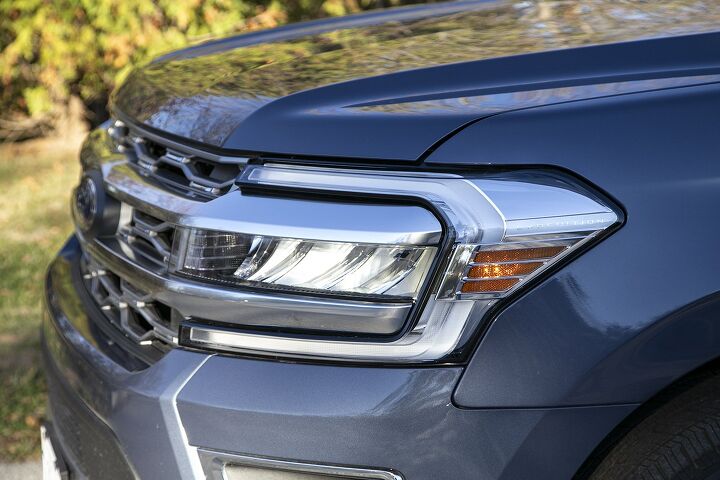






































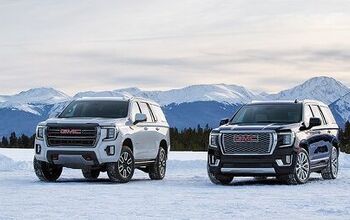
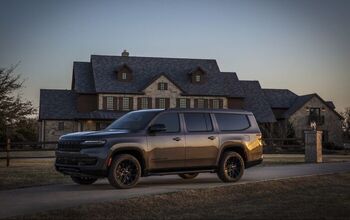
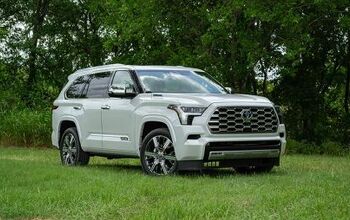
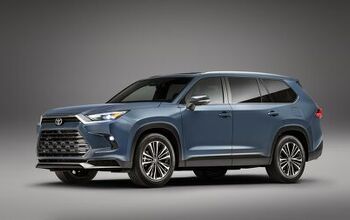


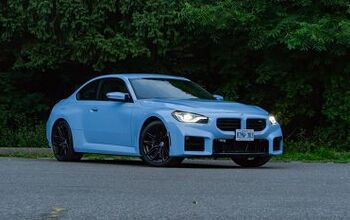


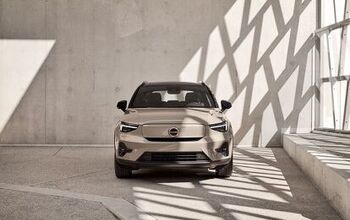

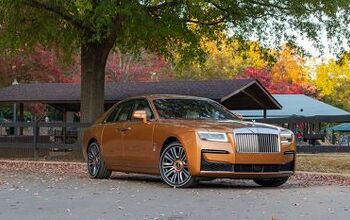
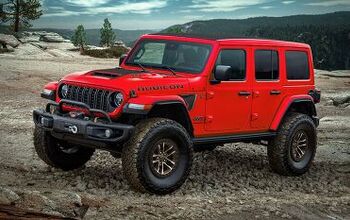

Comments
Join the conversation
Toyota is very dependable and reliable, quality is superior as well, it is the obvious choice here.
NO!